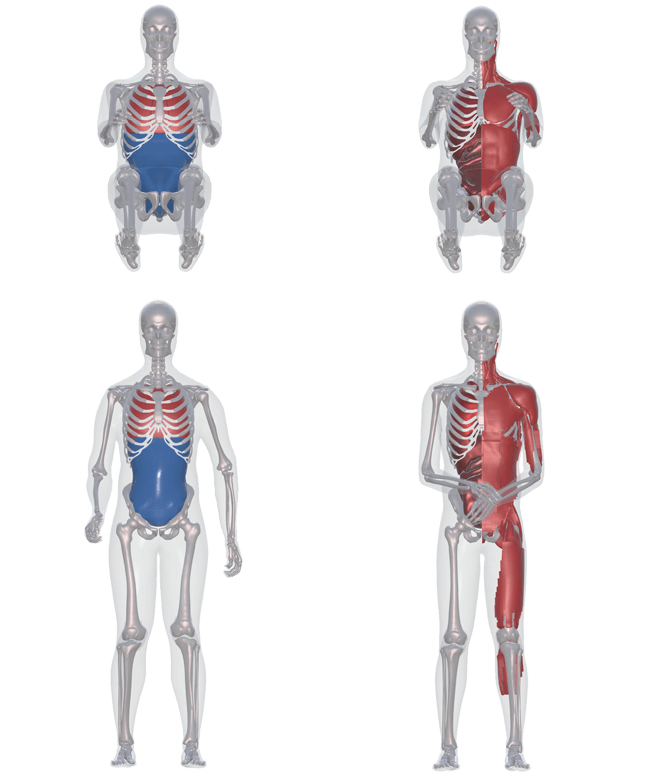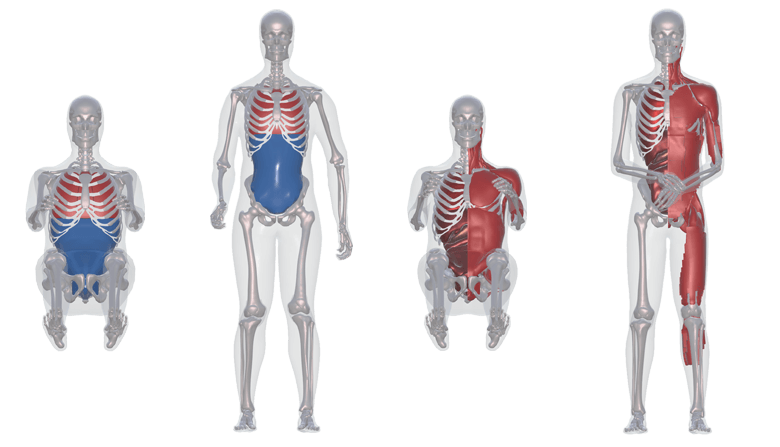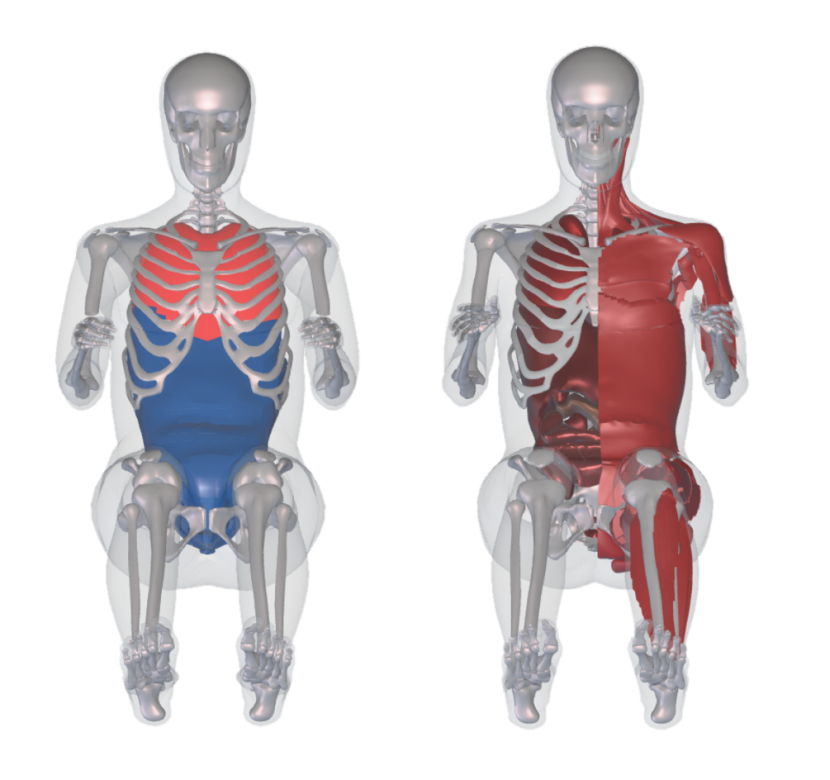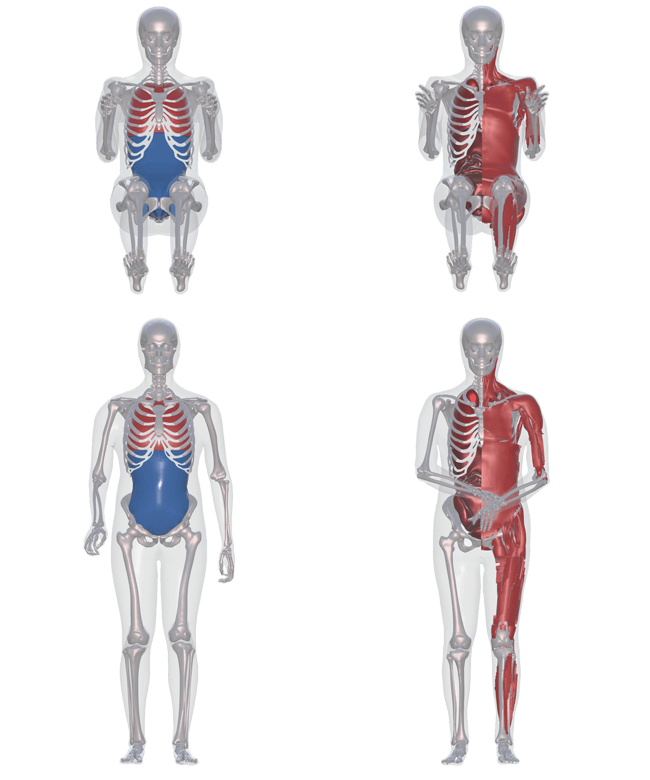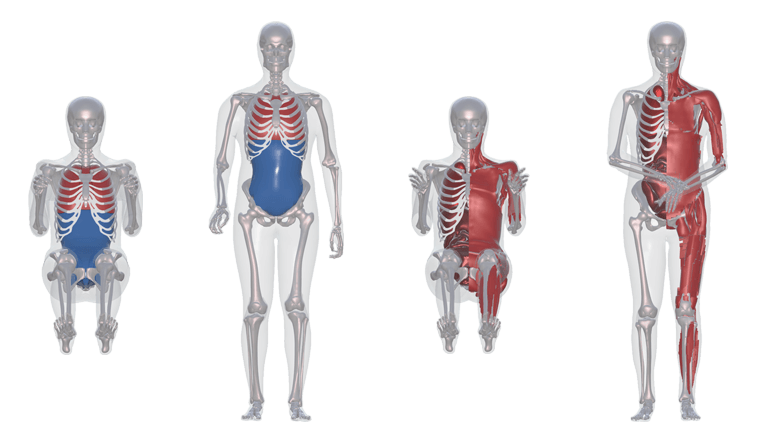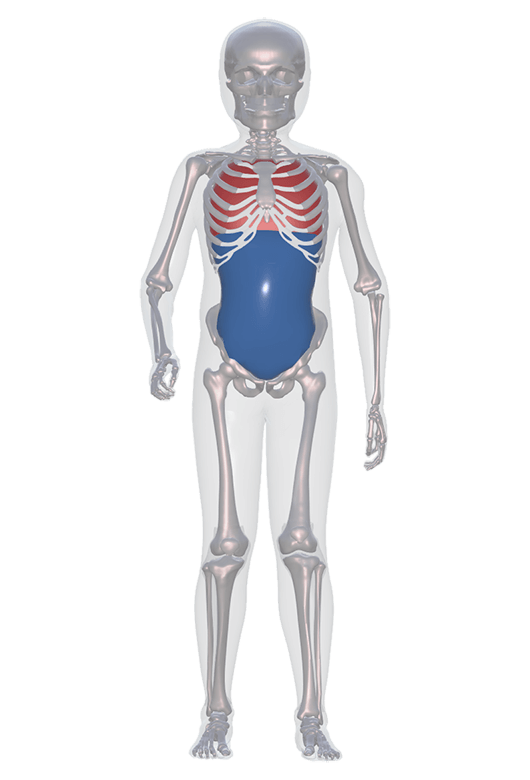Virtual Human Body Models
People are not one-size-fits-all. The tools we use to study them shouldn’t be, either. Explore virtual human body models for testing your technologies that are customizable to a wide range of anthropometries.
Elemance licenses the family of GHBMC virtual human body models, offering over a dozen models that represent a variety of anthropometries, ages and sexes. Models are available in a whole body model or specific body regions that can be morphed to fit a wide range of specifications, giving you the ability to study your design in highly customizable scenarios.
Model Types
Detailed Models
Detailed injury prediction
Designed for crash-induced injury metrics and criteria
Robust models
Highly complex bones and internal organs
Variety of uses
Optimal for crash, sports, and military related studies
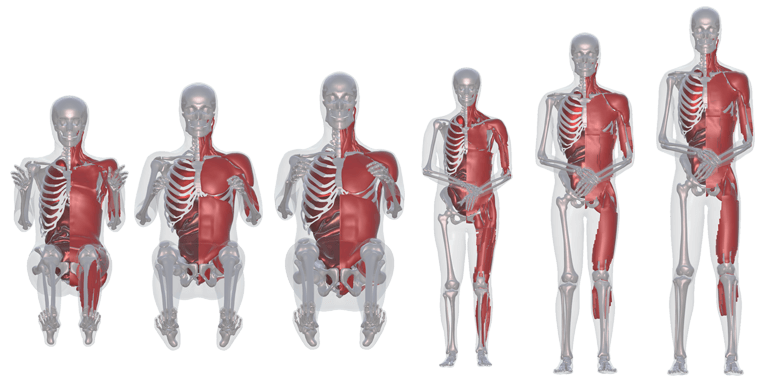
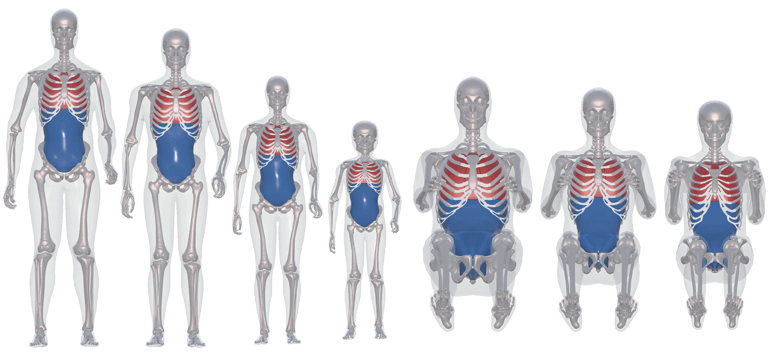
Simplified Models
Fewer elements for faster run time
Up to 50x faster run time versus detailed models
Designed for kinematics and kinetics
Optimized for robustness, ease of positioning, and modularity
Easier to configure
Fewer elements and contacts, kinematic joints, and simple materials

Detailed Model Layers

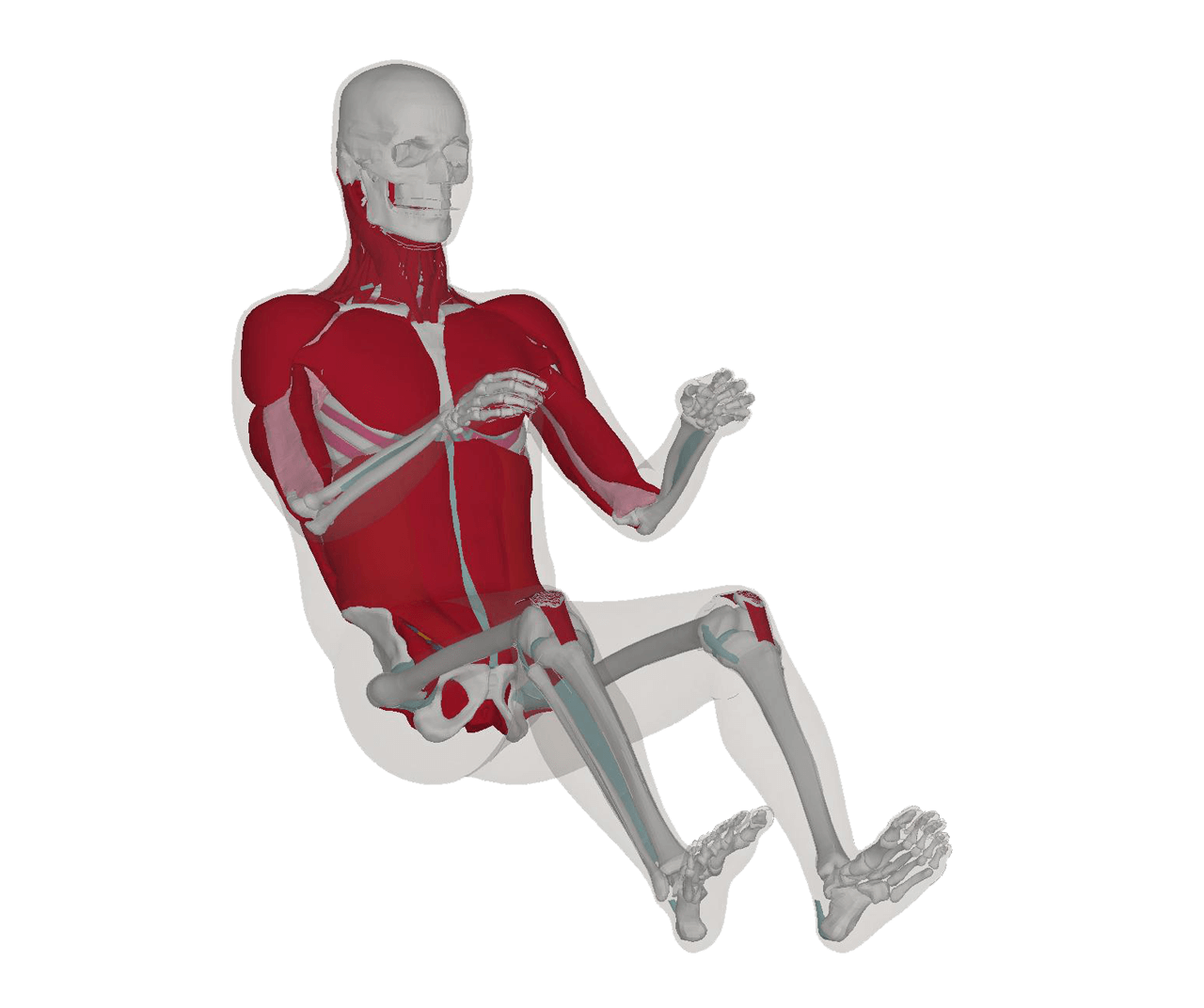
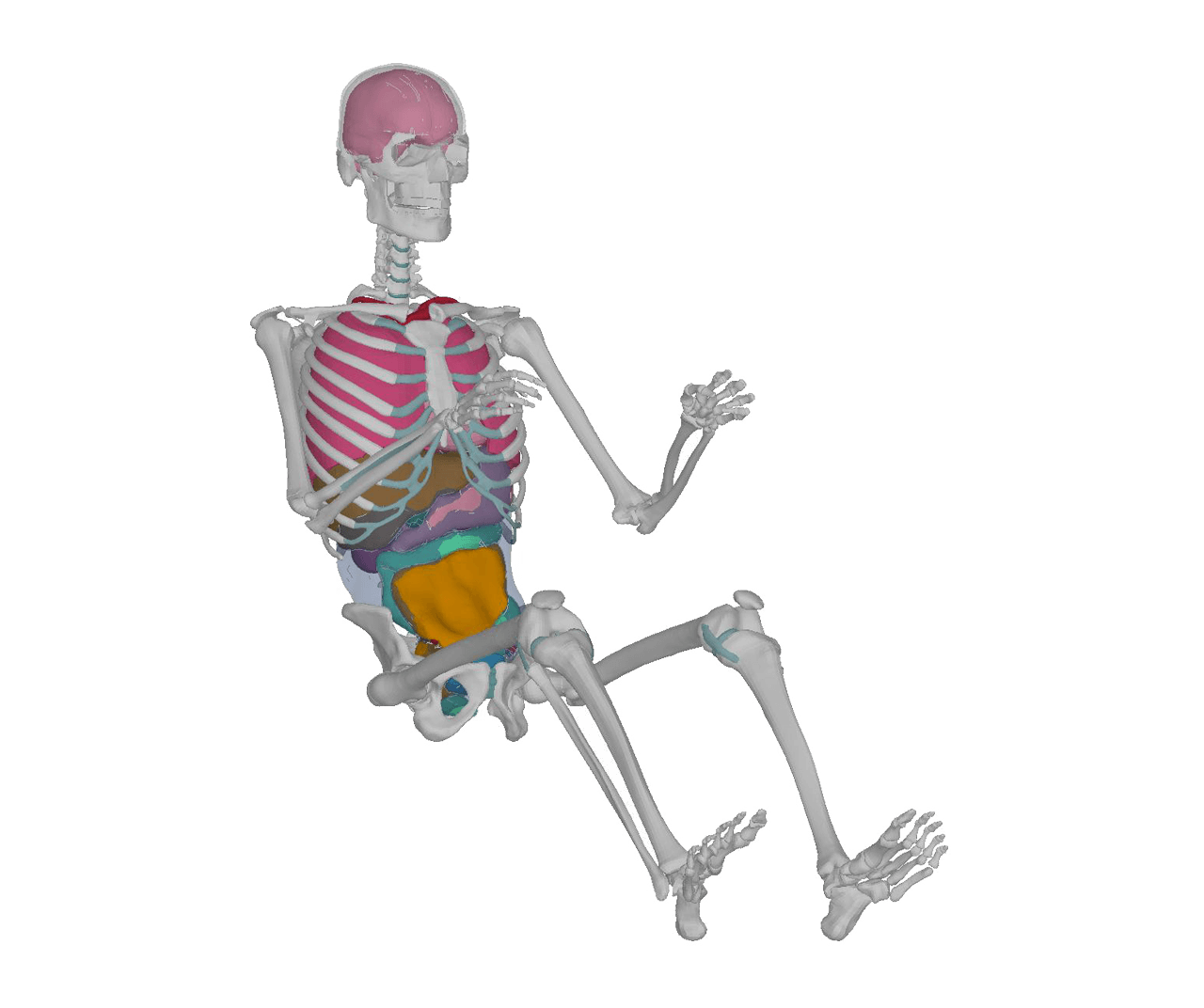
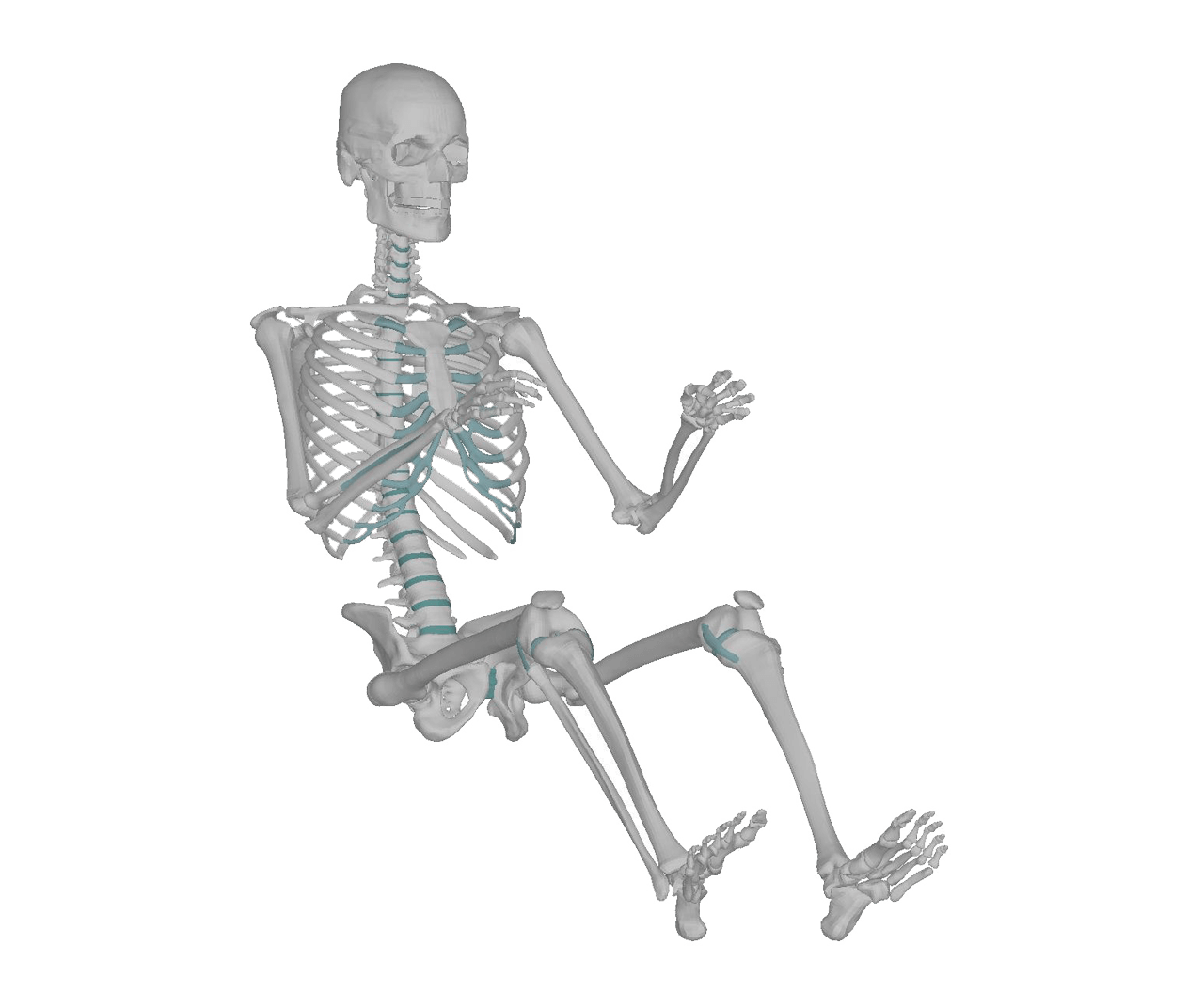
Simplified Model Layers

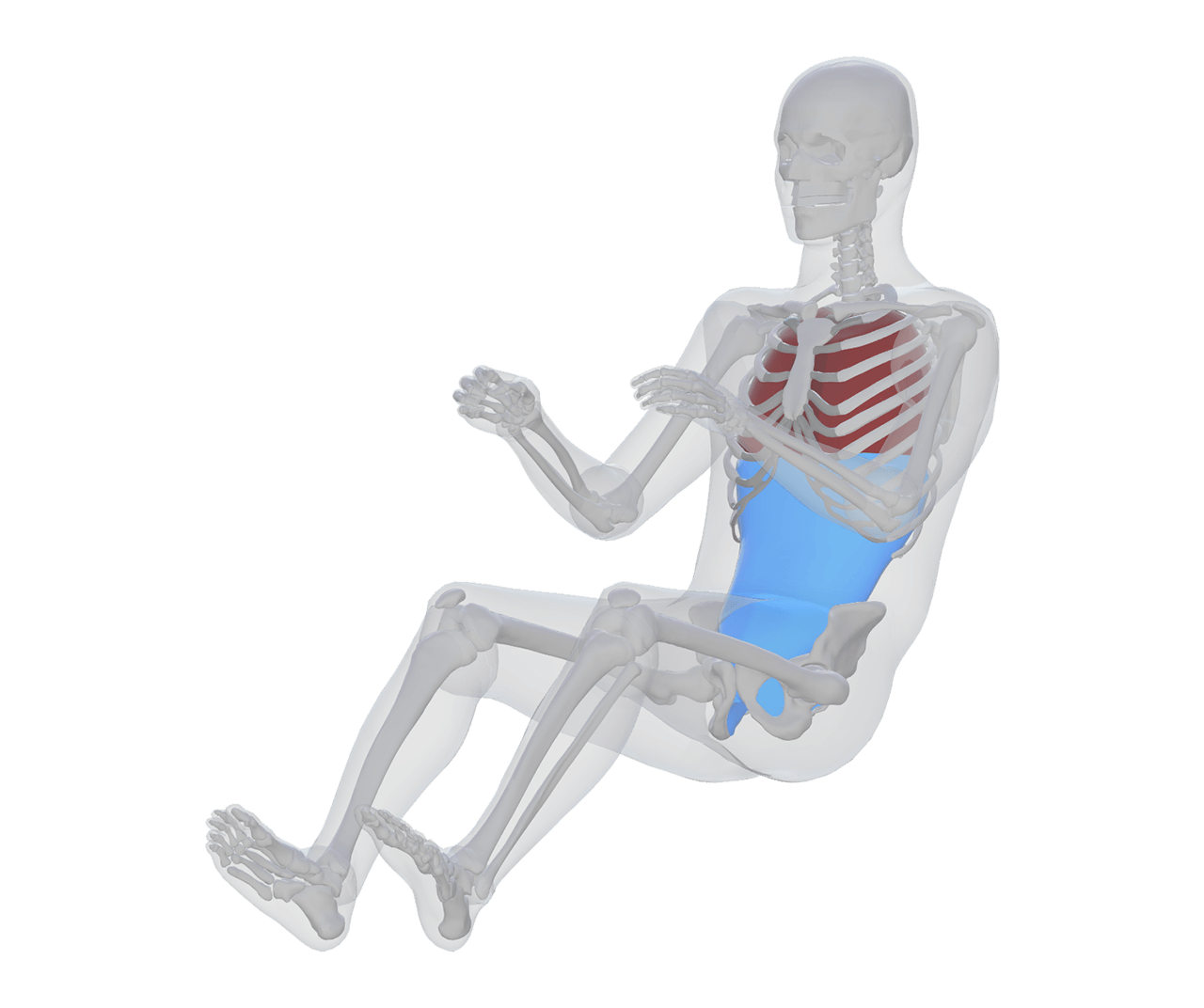

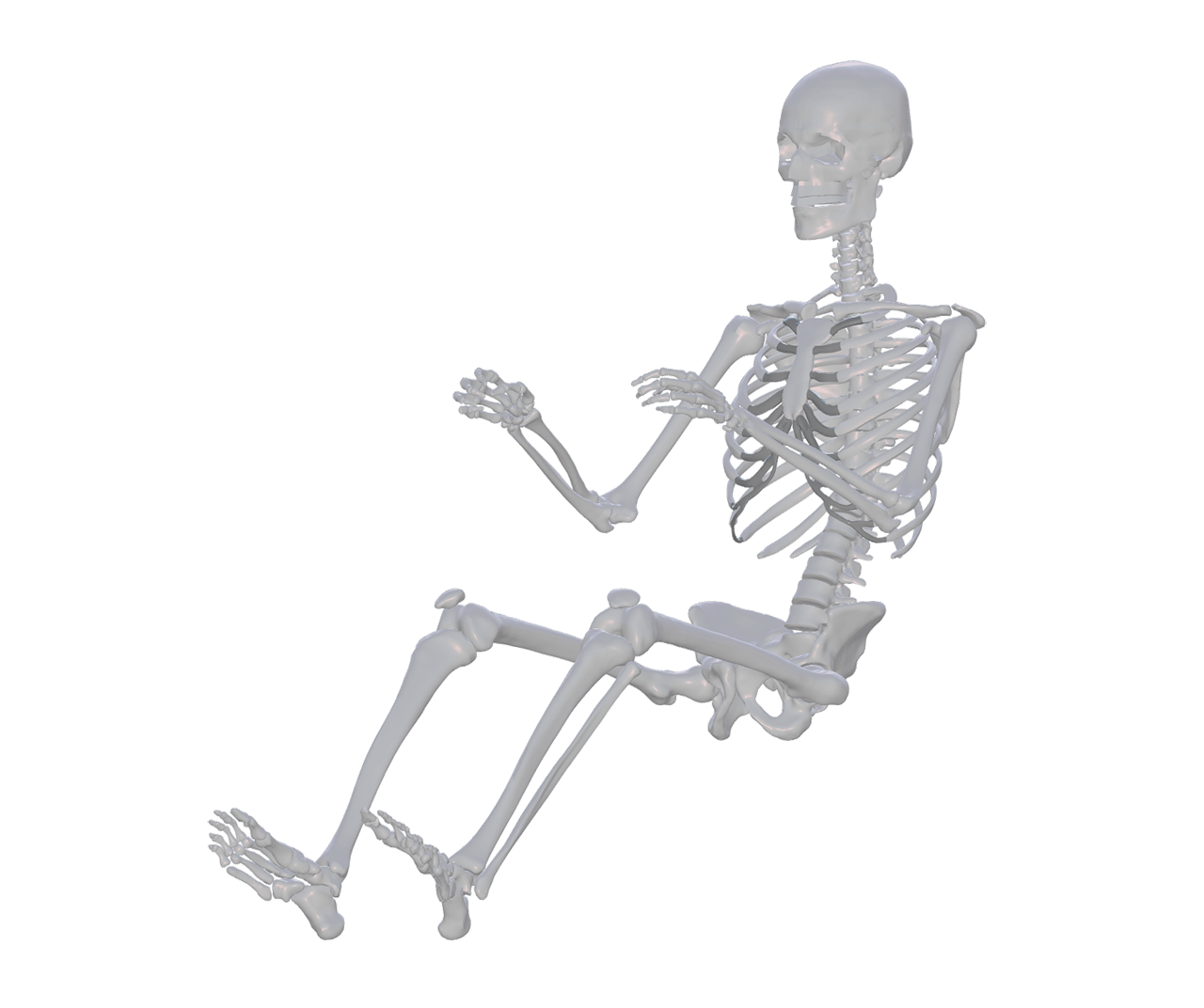
Find the Right Model for You
Not sure which model is right for your research? We can help you identify the model that will work best and answer any questions you have about customization.

